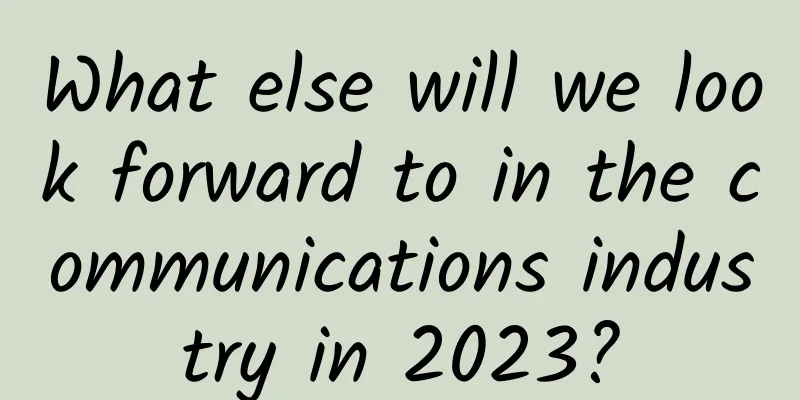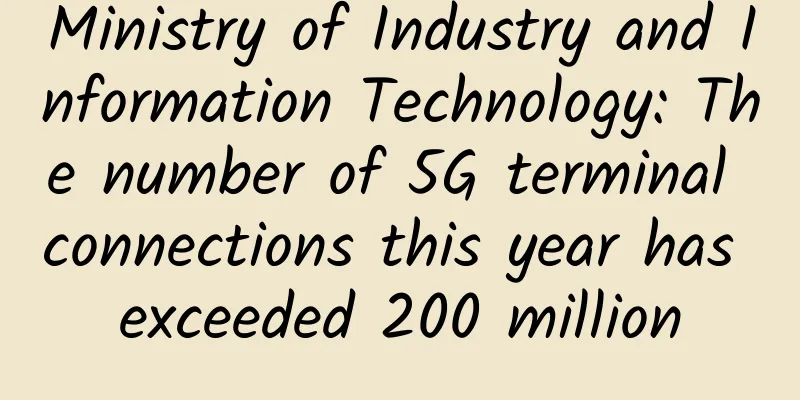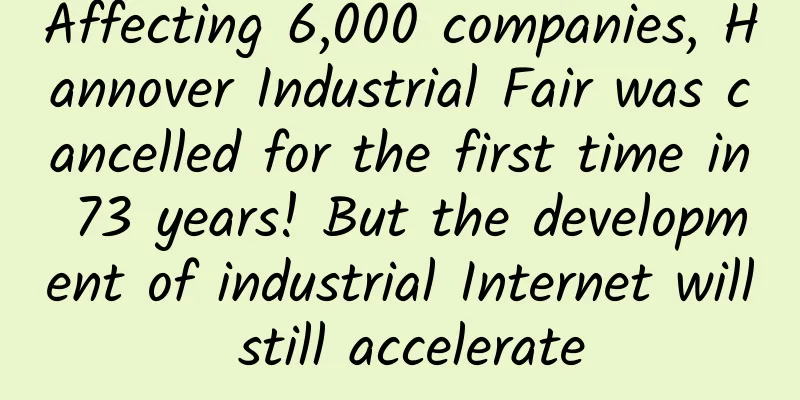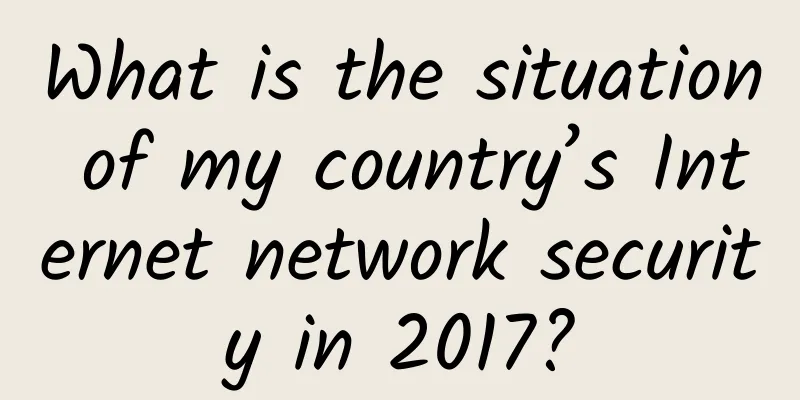What else will we look forward to in the communications industry in 2023?

|
Hello everyone, I am Xiaozaojun. The joyful and tiring Spring Festival holiday has officially ended. What lies before us is the brand new year of 2023. After three long years of fighting the epidemic, I believe everyone’s feelings are as complicated as mine facing the year 2023. On the one hand, we are eager to return to normal life as soon as possible, work hard, and make up for the time that has been stolen. On the other hand, the internal and external situations are grim. In addition to the epidemic, we are facing many difficulties. These difficulties make us anxious and nervous. What will happen in the coming year? Can we overcome the difficulties? Will our lives become better? I am not able to predict or judge the direction of the country, society and economy. As a communications industry practitioner and media person, my focus is on the future trend of this industry. In today's article, I will combine my own experience and observations to talk about my views on the key development directions of the communications industry in 2023, and exchange ideas with you. The overall trend of the communications industry
In the past few decades, human communication technology has gone through several important stages of development. Before the 1990s, the main type of network built was voice call network to meet the communication needs between people. Since the 1990s, with the rise of the Internet, data services have become the main direction of network construction. The main line of evolution of communication technology has also begun to shift from voice networks (circuits) to data networks (packet messages). After 2000, although 3G was born, it did not cause a sensation. It was not until around 2007 that the emergence of smartphones greatly promoted the iteration of mobile communication technology and the transformation and expansion of transmission networks (driving the development of all-optical networks). Humanity officially entered the era of mobile Internet. Starting around 2017, the rise of 5G and the explosion in demand for the Internet of Things have helped the communications industry find a new blue ocean: the “Internet of Everything.” Focusing on the "Internet of Everything", the main battlefield of the communications industry has shifted from consumer Internet to industry Internet. Communications technology has begun to strengthen its implementation in vertical industries, and together with information technology, it has transformed traditional industry scenarios, promoted digital transformation, and boosted the digital economy. At present, we are still in the initial stage of industrial Internet. This stage will last for a long time.
After a long period of rapid development, our entire communications industry has gradually entered a stage of stagflation. On the one hand, there has been no breakthrough in basic communication theory, and it has become increasingly difficult to improve network performance. On the other hand, user needs have been met, and we have not yet found new needs and growth points. From the perspective of network construction, the communication construction cycle has entered a trough period, and 5G investment is nearing its end. Operators have made it clear that they will reduce investment in CAPEX or even zero investment. Therefore, it is not groundless to say that the communications industry as a whole is in decline and that “there is no future in communications”. Against the backdrop of overall recession, two things temporarily saved the communications industry. First, the country has launched a new digital infrastructure strategy. The country has seen the huge potential of the digital economy and has made digital transformation a key strategy to support and promote it. Industry insiders all know that operators don’t have much motivation for 5G construction, but the government has given it a push. In addition to 5G, the government is also promoting gigabit cities, data center construction, and computing. These investments in digital infrastructure, supported by policies, have helped to ease the downward trend in the communications industry. Simply put, this is a form of life extension. Second, it is the epidemic. As you can see, over the past three years, information and communication technology has played a huge role in fighting the epidemic. It has also injected a shot in the arm to the communications industry and stabilized the basics. Communications is different from IT. IT is information, computing power, and the protagonist, and it is on the rise and has a bright future. Communications is a connection, a pipeline, and a supporting role. Although communications plays a big role, the direct return on investment is small, and it has little status and voice, so its development prospects are not optimistic. In 2023 and the years that follow, communications professionals will have to face a realistic question: how will we make a living before 6G (2030)? From a macro perspective, the communications industry will eliminate some companies. Those with weak R&D capabilities, weak productivity, and weak management will go bankrupt or be acquired. The companies that survive will inevitably cling to information, keep a close eye on opportunities for digital transformation, reap profits from them, and maintain survival. Under fierce competition, the aggregation effect of resources and talents will become more obvious. Some giants will emerge in various segments of communications. Industry competition will become more unfair, and no new companies will join. In other words, those who suffer from drought will die of drought, and those who suffer from floods will die of floods.
In addition to the situation mentioned above, the communications industry (or the entire technology industry) is also facing a huge practical challenge, that is, how we can save ourselves and break through the industrial and technological blockade that some countries are desperately building. I can’t say for sure whether global integration has ended or not. But the current situation is one of separation, decoupling and blockade. The rope around our necks is tightening little by little. We have struggled for decades and have achieved some results, but we are still unable to compete with our opponents. Will we be able to establish a completely independent technical system? Can we break through the blockade? Can we make breakthroughs in key technologies? Will the external environment change for the better? When will it change? … Too many problems depend not only on our own efforts, but also on time and luck. This is a test for the leadership and also concerns the fate of each of us. From the perspective of the communications industry, the reality of the blockade is that the core links of the industrial chain, such as chips, are stuck, which may lead to production paralysis. The blockade of some key R&D tools, software and hardware, has led to research and development obstruction and lack of product competitiveness. The withdrawal of some advanced products and technologies may lower the technical level of our digital transformation solutions, or increase implementation costs and slow down the speed of popularization. Over the years, we have been talking about self-help and breaking through, and getting rid of the "bottlenecks". But in fact, Xiaozaojun personally thinks that we don't seem to be doing the right things, nor are we doing things right. A lot of resources have been wasted and cheated away. People who really do things, on the contrary, have no resources. There are many reasons for this, and it is impossible to explain in detail. Communications industry: several areas worth paying attention toHaving said so much about the macro aspects, next, from the perspective of specific technologies, Xiaozaojun will list several hot topics worthy of attention in 2023 and make brief comments (personal opinions only).
After 3GPP R17 is frozen, the relevant standards will be implemented. Generally speaking, one year after the standard is frozen, the industry will gradually start to apply it. In R17, I personally think that RedCap is an important focus. The Internet of Things has developed a lot in recent years. The standards were originally very confusing, but gradually became clearer. 2G/3G networks have been phased out, NB-IoT is progressing step by step, and Cat.1 has emerged. The IoT market is extremely sensitive to costs. The success of a standard does not entirely depend on the technological advancement, but more on the support of the industry chain and whether it accurately covers the user's pain points. Cat.1 undoubtedly has an advantage in cost. As a lightweight 5G, RedCap is used to meet medium-speed demand scenarios and will occupy an important position in the future public mobile communication system. In the short term, we cannot expect this technology to have any major breakthroughs or applications, but its debut performance this year will affect subsequent developments. It is worth mentioning that passive Internet of Things has gradually become popular last year, and we can pay attention to its subsequent trends.
The focus of the transmission network is on two aspects: one is the operator transmission network, and the other is the data center network. When building 5G networks and gigabit homes (cities), operators have also made a lot of investments in backbone transmission networks. At present, the scale of operator backbone networks is very large, supporting the traffic of mobile communications and optical fiber fixed network communications. In building the backbone network, operators still hope to take the high-end route and build high-quality networks, which is the so-called differentiated service (in order to collect more money). On the 5G bearer network, the competition among the three major operators over technical routes is intensifying. They are all vying for the right to speak on standards and also hoping to win the support of the industrial chain. At present, solutions for fronthaul are basically mature, and semi-active solutions have won the favor of operators due to their balance between cost and performance. In terms of IPv6 (SRv6), driven by national policies and urged by manufacturers, there should be great progress in the future. As the third generation of IP networks, whether they can subvert the traditional IPv4 network and bring revolutionary improvements to the Internet is worth paying attention to. In terms of optical communications, G.654.E optical fiber has been recognized by the industry and operators, and accelerating its application is an inevitable trend. On the operator side, promoting the construction of all-optical networks has entered a new stage. The popularization of OTN in metropolitan area networks is a trend. In terms of technology system, 400G is in the application stage, while 800G and 1.6T are in the research stage. The price of high-speed optical modules is still high, which will have a certain impact on the speed of popularization. In recent years, influenced by digital transformation, enterprises have been moving to the cloud, and the demand for computing power in various businesses has increased sharply. Coupled with the promotion of the national East-West computing strategy, the growth of data centers (IDCs) across the country has entered a period of explosive growth. This change also brings huge opportunities to optical communications. The market size of data center internal networks and communication networks between data centers (DCI) is huge, and it can be said that it is a big cake that cannot be missed. New data center switch technologies such as CPO/NPO are expected to be put into use more quickly in the future. These technologies will significantly reduce equipment power consumption and serve the dual carbon goals of communication networks. Energy reduction and emission reduction in data centers have considerable market potential and are also worthy of attention.
When 5G construction started, the core network was built in a virtualized manner. But in fact, the so-called core network virtualization has not fully achieved the original goal of full decoupling. The binding between equipment and manufacturers is still very tight. There are also many problems with the virtualized core network, and the difficulty of opening and maintaining it is not as simple as imagined. In 2023, with the construction of operators' Internet of Things, the construction of a virtualized core network dedicated to the Internet of Things will continue to advance, and the Internet of Humans and the Internet of Things will still be managed and maintained separately. In terms of business, operators and equipment manufacturers have been pushing 5G messaging last year, but overall it has not become popular. Users are used to the ecosystem of WeChat, and mobile terminal manufacturers do not seem to be very enthusiastic, so 5G messaging still needs time to develop slowly. I personally am not optimistic about this business.
If there was any prominent hot spot in the communications industry last year, computing power network could be one of them. As I said before, if communications want to develop greatly, they must firmly hold on to information. Cloud-network integration is an inevitable trend, and computing power network is a phased product of cloud-network integration. The ability of ICT to provide services to users is ultimately computing power. The network needs to serve this goal, allowing users to obtain computing power more conveniently, more efficiently, and at a lower cost. At present, the three major operators have some differences in their understanding of computing power networks, and their names are also different (just like the bearer network, they want to be unique). But their technical essence is the same. Operators have computing power and networks, and have inherent advantages and motivations in building computing power networks. If there are breakthroughs in computing power settlement and other aspects in the future, it is likely to bring us a new way of computing power trading. It is not yet certain whether this method will be successful, but it is worth paying attention to.
The combination of AI and traditional communication networks is an important trend in the development of communication technology. Any manufacturer with a little bit of strength is researching this field. In the past few years, equipment vendors such as Huawei, ZTE, Ericsson and Nokia have demonstrated their progress in this field, including improvements in wireless algorithms, network optimization, network operation and maintenance (self-analysis and self-handling of faults), and equipment shutdown for energy saving. The results displayed by manufacturers are always so tempting, but when they can be commercialized is still an unknown. Operators have an advantage in AI-based communication networks, as they have data. As we all know, data is one of the three major elements of AI. Only with data can better algorithms be made. Operators cannot easily provide this data to equipment manufacturers, let alone smaller partners.
When talking about data, we have to mention data security. In recent years, the country has continuously strengthened its management of data security. Although we encourage the development of machine learning, it does not mean that manufacturers are allowed to use user data at will. In terms of data desensitization, secure storage and utilization, domestic laws and regulations are constantly being improved, and technical standards are also being improved. Last year, there were many public user data leaks around the world, which should sound the alarm. To be honest, although some technical staff in key public institutions have security awareness, their technical capabilities are insufficient. They are in control of a large amount of sensitive data, which can easily lead to accidents. Some contractors who have won the bid through some means have poor qualifications and even worse technology, which can also easily cause problems. Most of the information security incidents that have occurred so far are not technical loopholes, but human accidents.
When talking about the future of communications, 6G cannot be left out. First of all, I want to make it clear that 6G is still a long way away from us. All current discussions about 6G are prophetic and divergent and are at the stage of imagination. From the perspective of standards, let alone the 3GPP R18 that is still in progress, even R19 and R20 are not 6G. It will take at least until 2028 to have a decent prototype. At present, the most likely points of 6G are space-air integration (satellite communication), terahertz, intelligent metasurface, and endogenous intelligence. Now in 2023, we can still focus on the development of satellite communications, which is closest to us. Last year, I introduced satellite internet many times. Musk's Starlink, the newly established StarNet in China, and the satellite functions newly launched by Huawei and Apple have continuously stimulated the public's attention to satellite communications. With the continuous development of low-orbit satellites, we do see the market potential of satellite internet. Last year, several companies were devoted to researching chip technology for satellite phones. I wonder if there will be more results this year. Despite the concern, I still suggest that everyone remain rational about satellite communications. It is impossible for it to replace terrestrial cellular mobile communication networks (it is mainly a supplement), and its main service targets are still specific groups of people and industries.
There is a clear trend of digital technology being implemented in all walks of life, and the private network communications market is booming. Last year, the Ministry of Industry and Information Technology allocated 5G private network communication frequencies to Shanghai Commercial Aircraft Corporation. This is a subtle signal. It is not clear whether more companies will get private network frequencies this year, but the government’s attitude of encouraging private network communications should be clear. It is nothing more than a difference in methods. In China, operators will probably still play a leading role in building private networks, but we hope to give enterprises more autonomy in their choices. Currently, operators are increasing their efforts to promote vertical industry markets, but the results are not particularly good. This is related to both the user's acceptance and the marketing capabilities of the operators' own team members. The marketing of toB is completely different from that of toC, and the traditional way of selling private lines cannot be applied mechanically. The concepts of many operators' employees need to be changed, and the operators' own market support capabilities also need to be strengthened. Operators have massive industry customer resources, and whether they can open up the toB gold mine will depend on the next few years.
Among so many applications in vertical industries, I think the Internet of Vehicles is the most mature and has the fastest progress. In 2023, the penetration rate of the Internet of Vehicles will continue to increase, driving the growth of the upstream industry chain (chips, radars, modules, connectors, sensors). In terms of autonomous driving and remote driving, the pilot projects should also produce some results, and bolder implementation actions in more cities are not ruled out. The market size of Internet of Vehicles is large and the return on investment is quick, so I believe it will perform well.
Last year, some chip manufacturers, including Qualcomm, released Wi-Fi 7 chips. Some manufacturers also released Wi-Fi 7 products. In 2023, I believe that Wi-Fi 7 will be shipped in batches ahead of schedule. By then, more products will appear. (Of course, actual household popularization is estimated to be in 2024-2025.) The core improvements of Wi-Fi 7 are actually two points: one is the expansion and superposition of frequencies, and the other is network coordination. In the future, routers will be more interconnected and collaborate to improve user experience. In fact, with its current development, 5G is becoming more and more like Wi-Fi, and Wi-Fi is becoming more and more like 5G. ConclusionWell, the above is Xiaozaojun’s personal opinion on industry trends. All in all, it is unlikely that anything big will happen in the communications industry in 2023. In terms of consumer Internet, video is the engine driving traffic growth. VR/AR (metaverse) may take over from traditional video, further increasing the demand for network bandwidth. The decline in 5G mobile phone sales and the cooling of public attention to 5G actually reflect the weakness of 5G in consumer Internet and its failure. Gigabit broadband also has a bit of excess performance in current demand. In terms of industry Internet, we are in the climbing stage. In the future, there will be more and more projects related to enterprise digitalization. It depends on who can really laugh last. I am optimistic about the value of this matter. Digital transformation is a long-term task. If we work hard, it can still bring rich returns. We need to have enough patience. |
<<: Let’s talk about 6G development
>>: Talk about how 5G and AI work together from the perspective of 5 major industry applications
Recommend
Huawei's "Government Cloud China Tour" has a unique scenery in Shaanxi
In June, people from all over the world gathered ...
From telegraph to 5G, 7 changes in the 60-year history of mobile communications
The history of communication has been around for ...
Ruijie Cloud Desktop has emerged as a new force. Why do users prefer it?
[51CTO.com original article] Speaking of players ...
Will 4G be eliminated in the 5G era? Will 4G phones suddenly "lose network" like 2G?
my country's 5G has been officially commercia...
Xiaoyu Yilian's full range of new products are officially released to ignite the nuclear fusion of the audio and video conferencing industry
On August 2, the 2017 Xiaoyu Yilian E=mc² new pro...
After the construction of 5G, 4G Internet access on mobile phones has become slower. Is this really a marketing trick of the operators?
Preface [[332244]] Recently, many customers and f...
The Ministry of Industry and Information Technology's Radio Frequency Administration conducts a survey on 5G dedicated frequency demand
According to information from the official websit...
How 5G will drive drone technology forward
Ever since drones took to the skies, they have be...
[Security Alert] Baota Panel suspected vulnerability or Nginx abnormality
For the convenience of many friends, panels are d...
DiyVM: Starting from 50 yuan/month - dual core, 2G memory, 50G hard disk, Hong Kong/Japan/Los Angeles data center
DiyVM is a relatively low-key Chinese hosting com...
zorocloud: US CN2 GIA line VPS monthly payment starts from 34 yuan, including DDoS protection
Zorocloud is a domestic hosting company that was ...
How are 5G charges calculated: This is what the operators say. Are you willing to pay more?
An operator insider confirmed to IT Times, "...
Ruijie Networks releases "Digital Force Awakening Plan"
With the global industrial economy accelerating t...
Linux common command find record
The tribe recorded some usage of the find command...
The national 5G construction target for 2020 was completed ahead of schedule. These places are exemplary
According to the statistics of the Ministry of In...









